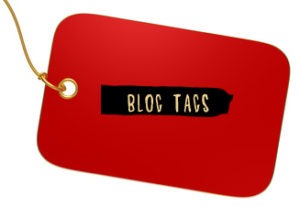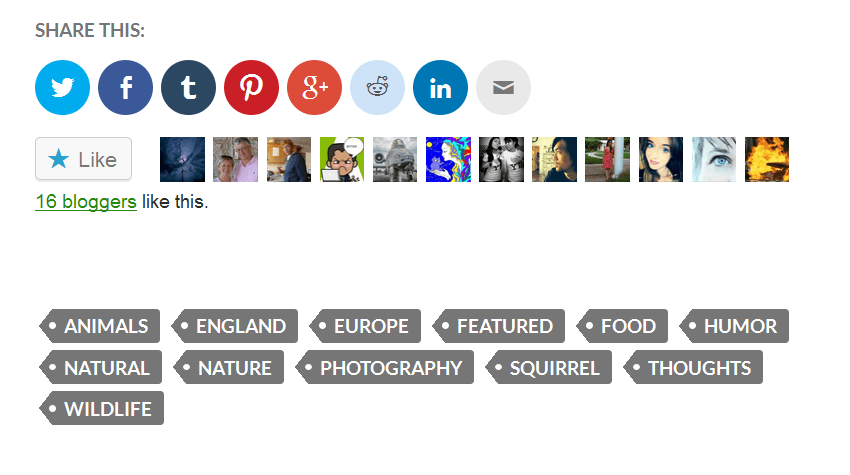 Today’s blog lesson is on understanding the basics of how to use tags with blogs. So my question is do you use tags on your blog, and if so do you understand the purpose of tagging?
Today’s blog lesson is on understanding the basics of how to use tags with blogs. So my question is do you use tags on your blog, and if so do you understand the purpose of tagging?
A brief background: I was talking to a fellow the other day, and after doing a simple review of his blog I had mentioned that his usage of tags needed work. He had for example 19 tags on one post and I suggested that he needed to rethink how he was using tags.
His response was – “I know I am supposed to use tags, but I just don’t get it”.
I believe that many people are going through the same problem and not getting it. They know they need to use tags, but they are not sure how to do it or even why they are supposed to use them.
 Enter BLOGBloke!
Enter BLOGBloke!
I decided to tweet a question to BLOGBloke about tags, asking him to explain to me what tags were, and here was his response:

Could the answer be this simple?
When you understand what categories and tags achieve then the answer is a resounding yes! The fact is when you use categories and tags on your blog, you are helping your readers and the search engines find your content quickly and easily.
Translate — it is a great organizational tool.
Have you ever been to a blog where you look at the sidebar and see a huge list of tags? (Editor’s note: otherwise known as a tag cloud.) If there are many, do you spend most of your time browsing the tags/categories and hardly reading any of the posts?
Then I would say that is a good example of not using tags or categories to the best effect.

While there is a lot of information on the net regarding tags and even categories, for the purpose of this blog lesson I want to keep everything as simple as possible.
Lets start with Categories…
When you set up your blog, consider your categories as topics within your niche. For example if your blog niche is about “pets” (which is a popular topic for many people), what would you want to write about?
When you think of your blog categories as a road map for people to easily see, then you will realize how important and useful categories really are. For the purpose of this example (a blog on pets) I might consider using these main categories:
Pets
- Dogs
- Cats
- Birds
This is where it gets interesting!
Your tags are those short snippets of information that are within the blog post itself that pertain to the topic or category that you are writing about.
The best part of using tags within a blog post is that anyone searching for information can easily find it by clicking on those tags. Every post you have ever written using a specific tag will show up on a new page.
Let’s go back again to our example of having a pet blog, and I am writing many posts about dogs (the category). Within those posts I might consistently write about things like “dog video“, “dog grooming“, “aging dogs“, “taking care of puppies“, etc.
Now imagine readers searching for “dog videos” for example, and finding post after post about this subject all on one page? Talk about convenient!
The fact is using tags on a blog is a very useful tool to help you and your readers keep organized.
There are those who will say that tagging is useless because you have archives. To answer this, go through your own archives and what do you see? You will see everything set to dates, but nothing to pinpoint anything specific.
The same can be said for going through categories. Yes, you will see everything written about the general topic (going back to our example blog about dogs) but nothing about “dog videos” or “aging dogs“ or — Tag .. Your IT!
Talk about finding the forest for the trees.
Check out BLOGBloke’s blog tips niche that he created. Click on blog tips and you will see what I mean. Are you seeing the bigger picture now?
How many tags should a person use on any blog post?
While I am sure there are many differing opinions, it is my belief that when using tags less is more. When you think about what you want to get known for (i.e. your niche) and when you think as BLOGBloke does that tags are like subcategories, then you will have an easier time deciding what you will want to use as a tag and what is useless.
Always remember that one of the big reasons why you are blogging is to become known in whatever field you choose to talk about (niche). Using tags properly will help you not only with the search engines, but will help your readers as well.
One last thought – there is such a thing as blog tag spam. Tag spam is when people use an excessive number of tags OR unrelated tags to a post in order to attract viewers ... PLEASE DON’T DO IT! You will only hurt yourself.
Questions:
1. There are many plugins that automatically look for tags. Do you have a favorite, or do you prefer to manually put in tags on your own?
2. How will you look at tags in the future?
Class dismissed!



